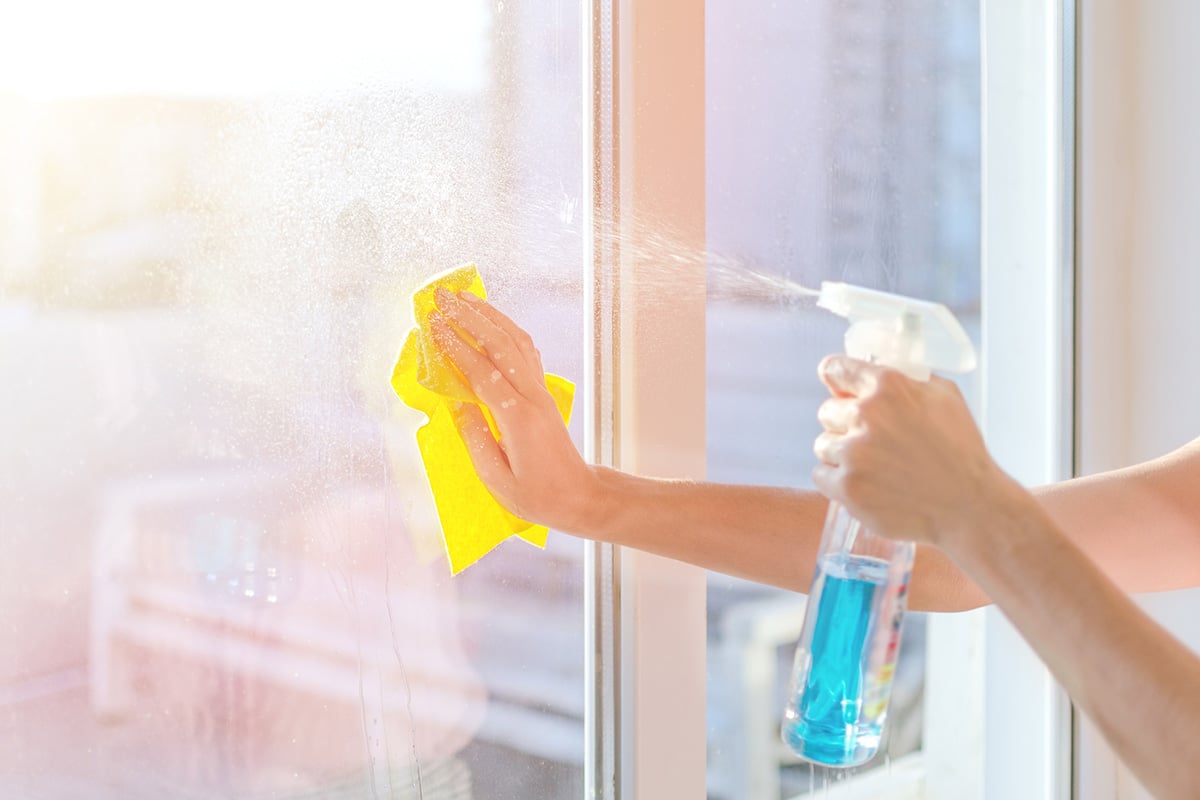
How to Care for Your Glass and Mirrors
Keith Wright
- 278
Mirrors not only adorn the walls of our homes, they often make-up the counters in our bathrooms, or serve as a focal point in our living rooms. While they are often overlooked when it comes to cleanliness, they still need to be cleaned on occasion. This article will go over some methods that may help you keep those mirrors looking fresh and new with minimal effort on your part. This is where the introduction would go. We’ll talk about what causes dirty mirrors and how to avoid them in the first place. We’ll discuss the types of mirrors and what cleanser will be best for those. We’ll introduce you to some helpful products that can help keep your mirrors in good condition.
Let’s start with what causes dirty mirrors and how to avoid them:
The surface of the mirror is made up of several separate layers, including a reflective layer or coating, a clear coat layer and an outer layer. These all have to be cleaned on a regular basis, but it’s not as easy as you might think. While you could use a regular household cleaner on your glass (dishwashing soap is actually one of the recommended cleaners), it isn’t really strong enough for this job. If you don’t use the right kind of cleaner, you could end up with a film on your mirror, which will make it harder to clean.
The best way to remove these spots is to simply use vinegar. It will soften the deposits and make them easy to wipe away. This is where we’ll tell you how much vinegar to use and what kind of vinegar works the best.
You can also prevent this build-up in the first place by using a squeegee after each shower or bath. This will remove most hard water and soap buildup which is one of the main causes of dulling on mirrors. [This is an optional suggestion that will teach about what causes dirty mirrors in the first place. Many mirrors do not need a squeegee.]
How to Clean Your Home’s Mirrors
- Remove glass cleaners and hand soap from under the sink. Also remove any window cleaner that contains ammonia or alcohol. Some of them contain ammonia, which will react with the glass of mirrors and windows, leaving streaks. Other cleaners are actually intended for cleaning photograph prints and can also leave streaks in your mirrors or windows. You don’t want to use these products on your mirrors! You’ll notice glass cleaners or a paste made of blue soda ash if you have any residue on your mirror or window from it. You could leave it there or try to wash it off but you won’t get the same results.
- Remove your glass from the frame and apply a small amount of one-Wash A Glass Cleaner to a soft to medium-soft microfiber cloth, such as an old white cotton towel or wash cloth. Use a circular motion in order to remove streaks and deposits. If the mirror is really dirty, go over it with one-Wash A Glass Cleaner again after each use.
- Continue this step until no more streaks are visible on the mirror. You may need to change the microfiber cloth as it becomes dirty.
- Rinse out with warm water and allow the mirror to air dry on a towel. Make sure things are not directly behind your mirror as you take it out of the frame, so that you don’t accidentally break them. Make sure the towel is hanging off of something high enough so that the water doesn’t run down onto surfaces below it.
- If you have multiple mirrors, follow these steps for each one and then move on to step 6.
- Use a microfiber cloth to apply one-Wash A Glass Cleaner to the frame of the mirror. Use a circular motion and rub it into the frame until no streaks are visible.
- Remove glass cleaners and hand soap from under the sink. Also remove any window cleaner that contains ammonia or alcohol. Some of them contain ammonia, which will react with the glass of mirrors and windows, leaving streaks.
Conclusion
With regular cleaning and care (and avoiding using inappropriate cleaners), your mirrors should last a long time, increasing the aesthetic value of your home.

